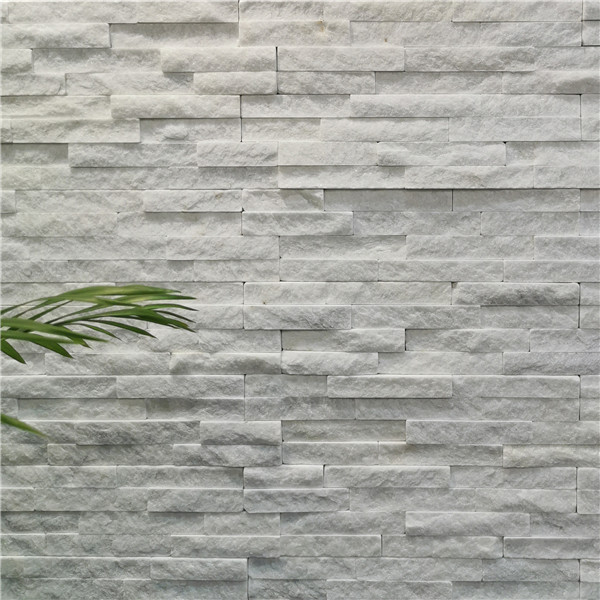Introduction
Handcrafted cultured stone has a rich history that dates back to ancient times when civilizations utilized various materials to create beautiful structures. Today, this art form has evolved into a sophisticated process that combines traditional craftsmanship with modern technology to produce stunning architectural elements. In this article, we will delve deep into the world of handcrafted cultured stone , exploring its origins, techniques, applications, and the artisans who keep this age-old tradition alive.
Origins of Handcrafted Cultured Stone
The concept of using stone as a building material has been prevalent throughout human history. From the ancient pyramids of Egypt to the grand cathedrals of Europe, stone has been a symbol of strength, durability, and beauty. However, natural stone is not always readily available or affordable for many construction projects. This led to the development of handcrafted cultured stone, also known as artificial or manufactured stone.
Handcrafted cultured stone is made by replicating the look and feel of natural stone through a process that involves mixing cement, aggregates, and pigments. This mixture is poured into molds that are designed to mimic the texture and shape of various types of stone, such as limestone, granite, or slate. Once the mixture has cured, the resulting product closely resembles the appearance of natural stone, but is more lightweight and versatile in terms of design and application.
Techniques of Handcrafting Cultured Stone
The process of handcrafting cultured stone requires a skilled artisan who understands the intricacies of working with the raw materials and molds. While modern technology has streamlined some aspects of production, the art of handcrafting cultured stone still relies heavily on traditional techniques and craftsmanship.
One of the key steps in creating handcrafted cultured stone is the design of the molds. These molds are typically made from silicone or rubber and are carefully crafted to capture the unique textures and patterns of natural stone. Artisans may also use tools such as brushes, chisels, and sculpting implements to add intricate details and finishing touches to the molds before pouring the concrete mixture.

Once the molds are prepared, the artisan mixes the concrete, aggregates, and pigments to create the desired color and texture for the cultured stone. The mixture is then carefully poured into the molds and left to cure for a specific period of time. After the stone has hardened, it is removed from the molds and may undergo additional processes such as sanding, staining, or sealing to enhance its appearance and durability.
Applications of Handcrafted Cultured Stone
Handcrafted cultured stone has a wide range of applications in both residential and commercial construction projects. Its versatility and aesthetic appeal make it a popular choice for architects, designers, and homeowners looking to add a touch of elegance and sophistication to their spaces. Some common applications of handcrafted cultured stone include:
1. Exterior Cladding: Handcrafted cultured stone can be used to create stunning facades for buildings, adding texture and visual interest to the exterior walls. The lightweight nature of cultured stone makes it easier to install and can be a cost-effective alternative to natural stone cladding.
2. Interior Walls: Cultured stone can also be used to create accent walls, fireplace surrounds, or feature walls in interior spaces. The variety of colors and textures available in handcrafted cultured stone allows for endless design possibilities, from rustic to contemporary styles.
3. Architectural Elements: Handcrafted cultured stone can be used to create architectural elements such as columns, archways, and balustrades that add character and elegance to a structure. These elements can be customized to fit the specific design requirements of the project.
4. Landscaping: Cultured stone is a popular choice for landscaping projects, such as creating retaining walls, garden borders, or decorative paving. Its durability and weather resistance make it well-suited for outdoor applications.
The Artisans Behind Handcrafted Cultured Stone
At the heart of handcrafted cultured stone production are the skilled artisans who bring creativity and craftsmanship to the process. These artisans often undergo years of training and apprenticeship to hone their skills and master the art of working with concrete and molds. Their keen eye for detail, patience, and dedication to their craft are what set handcrafted cultured stone apart from mass-produced alternatives.
Artisans working with handcrafted cultured stone often have a deep appreciation for the natural beauty of stone and a desire to recreate that beauty in their work. They may draw inspiration from nature, architecture, or historical designs to create unique and custom pieces that reflect their artistic vision. Additionally, artisans may collaborate with architects, designers, and clients to bring their ideas to life and create bespoke cultured stone elements that fit the specific requirements of a project.
Conclusion
Handcrafted cultured stone represents a harmonious blend of artistry, craftsmanship, and technology that has stood the test of time. From its ancient origins to its modern applications, handcrafted cultured stone continues to captivate and inspire with its beauty and versatility. The artisans who dedicate themselves to this craft play a vital role in preserving this age-old tradition and pushing the boundaries of creativity and innovation in architectural design.
As we have explored in this article, the art and craft of handcrafted cultured stone encompass a wide range of techniques, applications, and possibilities. Whether used in exterior cladding, interior walls, architectural elements, or landscaping, handcrafted cultured stone adds a touch of sophistication and elegance to any space. By understanding the origins, techniques, and artisans behind handcrafted cultured stone, we gain a deeper appreciation for this timeless art form and the enduring beauty it brings to our built environment.
